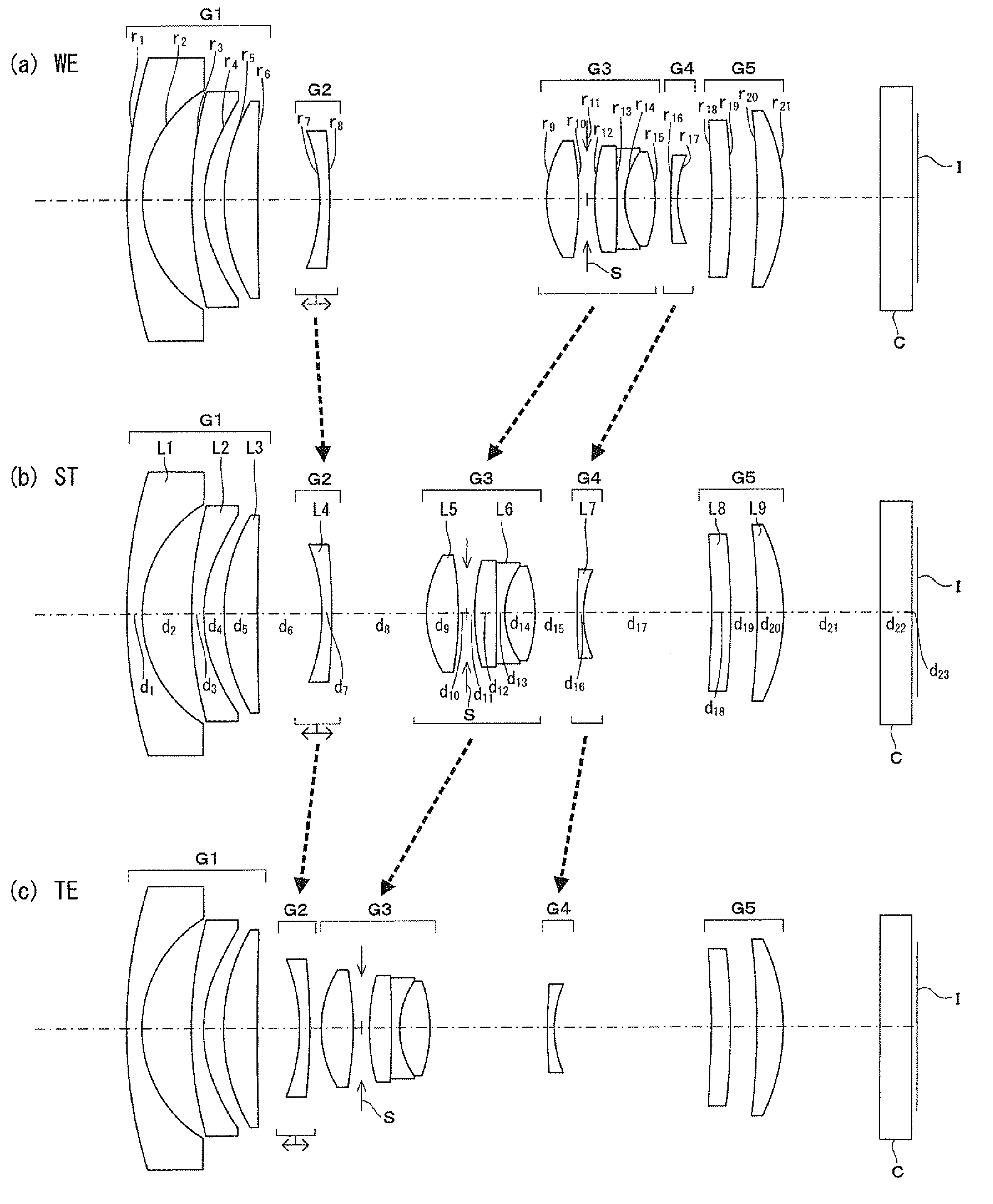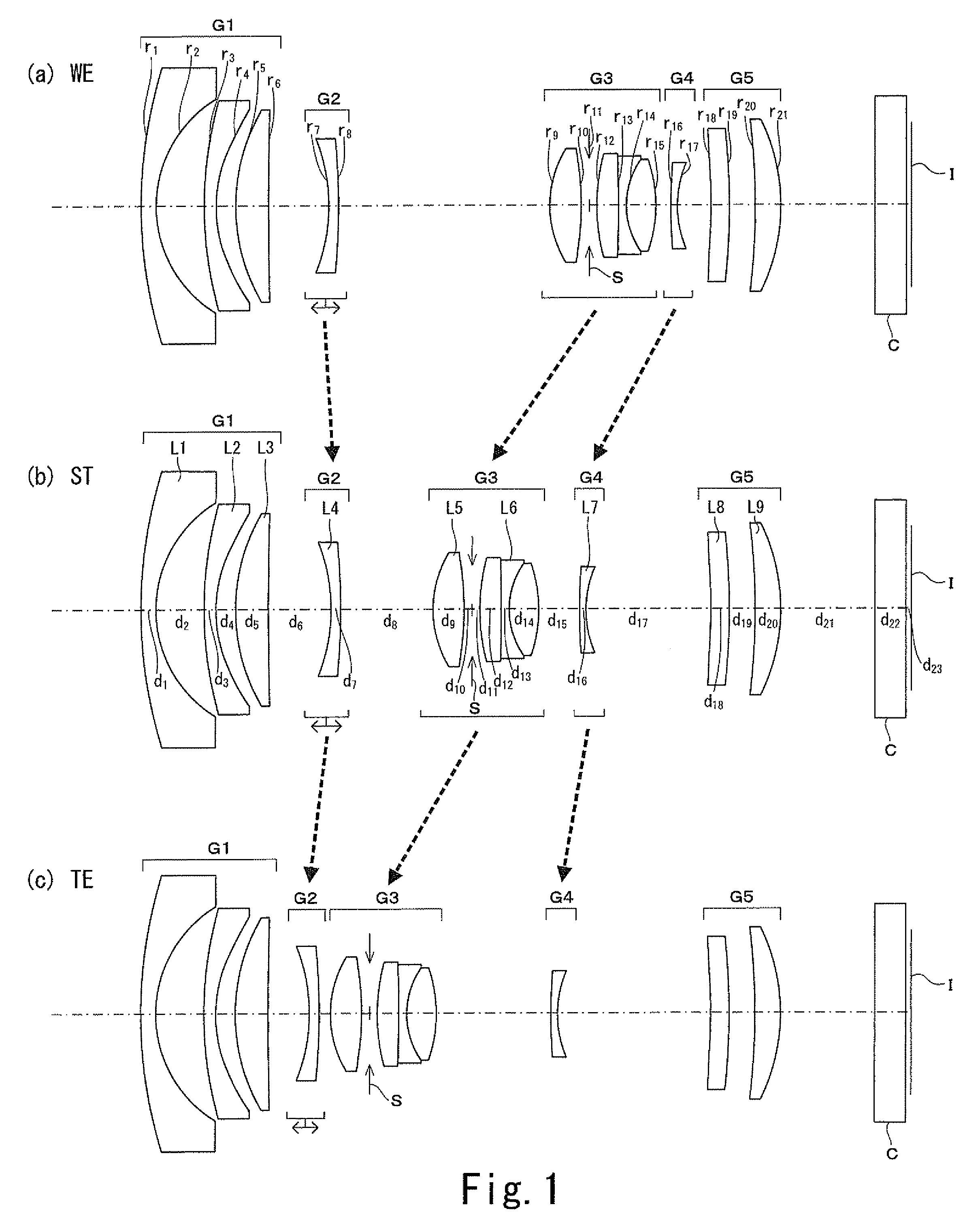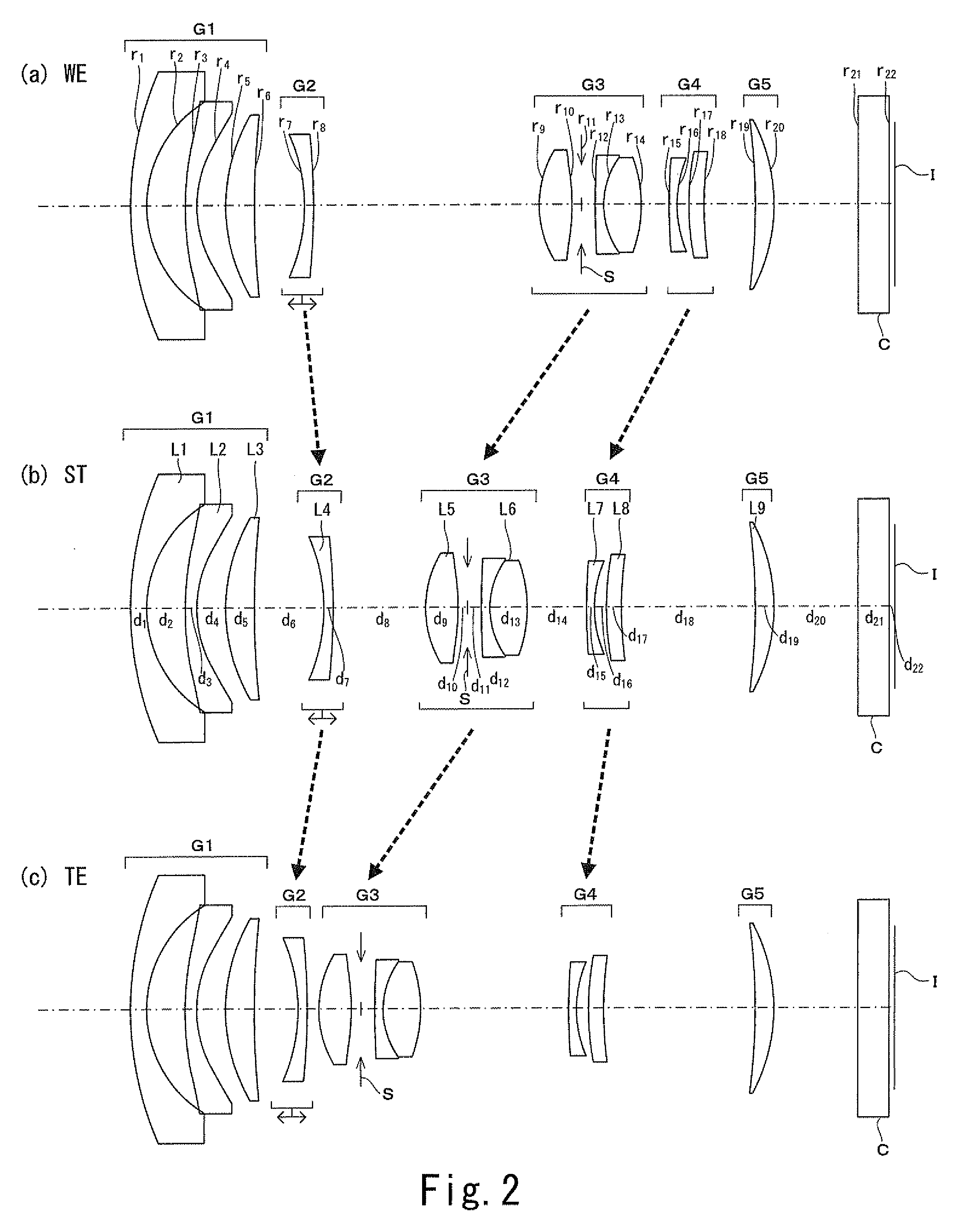Zoom lens
a zoom lens and zoom technology, applied in the field of zoom lenses, can solve the problems of noisy noise generation, movable heavy first lens group, and the inability to achieve the effect of advantageously improving the magnification of images
- Summary
- Abstract
- Description
- Claims
- Application Information
AI Technical Summary
Benefits of technology
Problems solved by technology
Method used
Image
Examples
example 1-1
[0300]FIG. 1 is a schematic cross-sectional view of the zoom lens of Example 1-1. As shown in FIG. 1, the zoom lens of Example 1-1 includes a first lens group G1 having a negative power, a second lens group G2 having a negative power, a third lens group G3 having a positive power, a fourth lens group G4 having a negative power and a fifth lens group G5 having a positive power arranged in the above mentioned order from the object side to the image side.
[0301]The first lens group G1 is formed by a negative meniscus lens L1 with its convex surface facing the object side, a negative meniscus lens L2 having two aspheric surfaces with its convex surface facing the object side and a positive meniscus lens L3 with its convex surface facing the object side.
[0302]The second lens group G2 is formed by a negative meniscus lens L4 with its convex surface facing the image side.
[0303]The third lens group G3 is formed by a positive double convex lens L5 having two aspheric surfaces, an aperture S a...
example 1-2
[0308]FIG. 2 is a schematic cross-sectional view of the zoom lens of Example 1-2. The zoom lens of Example 1-2 includes a first lens group G1 having a negative power, a second lens group G2 having a negative power, a third lens group G3 having a positive power, a fourth lens group G4 having a negative power and a fifth lens group G5 having a positive power.
[0309]The first lens group G1 is formed by a negative meniscus lens L1 with its convex surface facing the object side, a negative meniscus lens L2 having two aspheric surfaces with its convex surface facing the object side and a positive meniscus lens L3 with its convex surface facing the object side.
[0310]The second lens group G2 is formed by a negative meniscus lens L4 with its convex surface facing the image side.
[0311]The third lens group G3 is formed by a positive double convex lens L5 having two aspheric surfaces, an aperture S and a cemented lens L6 (lens block) of two lenses including a negative lens and a positive lens.
[0...
example 1-3
[0316]FIG. 3 is a schematic cross-sectional view of the zoom lens of Example 1-3. The zoom lens of Example 1-3 includes a first lens group G1 having a negative power, a second lens group G2 having a negative power, a third lens group G3 having a positive power, a fourth lens group G4 having a negative power and a fifth lens group G5 having a positive power.
[0317]The first lens group G1 is formed by a negative meniscus lens L1 with its convex surface facing the object side, a negative meniscus lens L2 having two aspheric surfaces with its convex surface facing the object side and a positive meniscus lens L3 with its convex surface facing the object side.
[0318]The second lens group G2 is formed by a negative meniscus lens L4 with its convex surface facing the image side.
[0319]The third lens group G3 is formed by a positive double convex lens L5 having two aspheric surfaces, an aperture S and a cemented lens L6 (lens block) of three lenses including a positive lens, a negative lens and...
PUM
 Login to View More
Login to View More Abstract
Description
Claims
Application Information
 Login to View More
Login to View More - R&D
- Intellectual Property
- Life Sciences
- Materials
- Tech Scout
- Unparalleled Data Quality
- Higher Quality Content
- 60% Fewer Hallucinations
Browse by: Latest US Patents, China's latest patents, Technical Efficacy Thesaurus, Application Domain, Technology Topic, Popular Technical Reports.
© 2025 PatSnap. All rights reserved.Legal|Privacy policy|Modern Slavery Act Transparency Statement|Sitemap|About US| Contact US: help@patsnap.com



